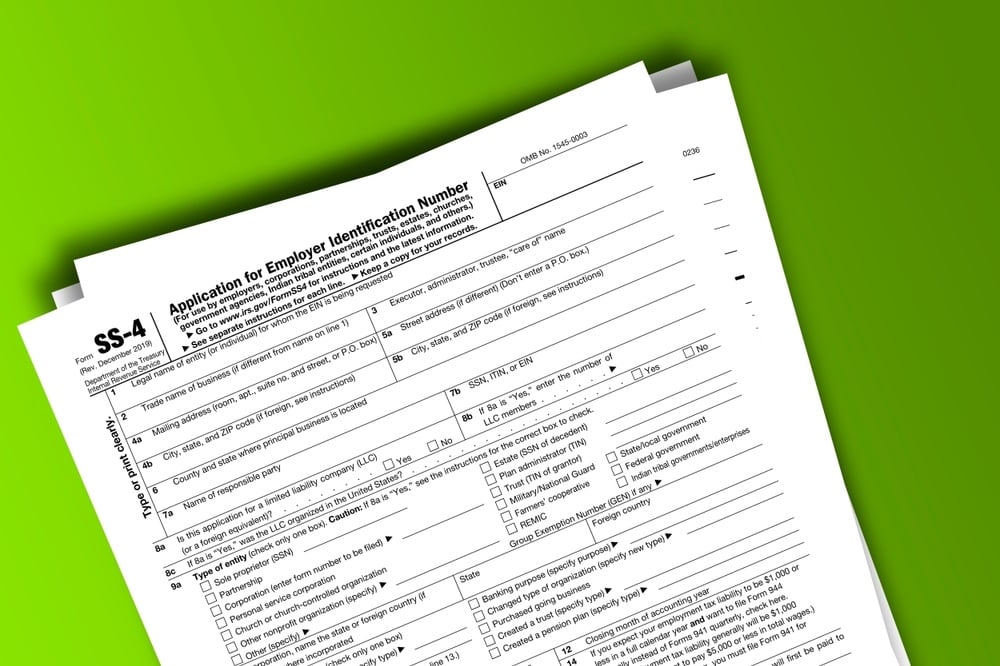Tax-related identity theft is on the rise, and it’s not just a problem for celebrities or billionaires. Criminals are targeting everyday taxpayers, using stolen Social Security Numbers (SSNs) or Individual Taxpayer Identification Numbers (ITINs) to file fake returns and claim refunds. The result? Delayed refunds, IRS audits, and months of stress trying to prove you’re not the fraudster. But here’s the good news: the IRS has a simple yet powerful tool to help protect you—the Identity Protection PIN (IP PIN). Think of it as a secret code that locks your tax account. Without it, no one can file a return using your SSN or ITIN. It’s free, easy to get, and gives you peace of mind during tax season.
In this guide, we’ll answer all your questions about IP PINs: what they are, how to get one, and why they’re so important. Whether you’re filing taxes for the first time or just want to protect your information, this article will help you stay one step ahead of fraudsters. Let’s dive in!
What is an Identity Protection PIN?
An Identity Protection PIN (IP PIN) is a six-digit number issued by the IRS to help prevent tax-related identity theft. It acts as a unique identifier for your tax account, ensuring that only you (or your authorized representative) can file a return using your Social Security Number (SSN) or Individual Taxpayer Identification Number (ITIN).
Without an IP PIN, the IRS won’t process your return, making it nearly impossible for fraudsters to file a fake return in your name. It’s a simple yet powerful tool to protect your identity—and it’s completely free.
How is an IP PIN different from other PINs?
You might be wondering how an IP PIN compares to other PINs you’ve heard of. Here’s the breakdown:
- IP PIN vs. E-File PIN: An E-File PIN is used to electronically sign your tax return, while an IP PIN is specifically for identity protection.
- IP PIN vs. SSN: Your SSN is a permanent identifier, while an IP PIN is temporary and changes every year.
In short, an IP PIN adds an extra layer of security to your tax account. It’s not a replacement for your SSN or ITIN, but it ensures that only you can file a return using those numbers.
How often do I get a new Identity Protection PIN?
The IRS issues a new IP PIN every year to keep your tax account secure. Here's what you need to know about the annual renewal process:
Annual Renewal
Your IP PIN is valid for one calendar year (not tax year), which means you'll need the current year's PIN for any return you file during that year. A new PIN is generated each year and typically available from mid-January through mid-November. To retrieve your new IP PIN, log in to your IRS account or wait for it to arrive in the mail.
Important:
- Use the current year's PIN regardless of which tax year you're filing.
- Example: Filing 2023 taxes in April 2024? Use your 2024 PIN
- Example: Filing both 2023 and 2024 returns in March 2025? Use your 2025 PIN for both
- Example: Filing 2023 taxes in 2025 due to extension? Use your 2025 PIN
Why the annual update?
The yearly update isn't just a formality—it's a key part of keeping your information safe. By changing your IP PIN annually, the IRS reduces the risk of it being compromised. This small step makes a big difference in protecting your identity, especially since an old PIN becomes useless once a new one is issued.
| 💡Pro Tip: Mark your calendar to check for your new IP PIN in mid-January. This ensures you're ready to file your taxes without delays, and we recommend storing your current PIN with your tax documents for easy access. |
How do I receive an Identity Protection PIN?
Getting an IP PIN is easier than you might think. Whether you’re tech-savvy or prefer old-school methods, the IRS has you covered. Here’s how it works:
Online Request
The fastest way to get your IP PIN is through your IRS online account. Here’s how:
- Log in to your account at IRS.gov
- Navigate to the Get an IP PIN tool and follow the prompts.
- Your IP PIN will be displayed on the screen and mailed to your address on file.
Why Go Online?
- It’s quick—you’ll have your IP PIN in minutes.
- You can access it anytime, anywhere.
Alternative Methods
If you can’t access the online tool, don’t worry—you still have options:
- Mail: Complete Form 15227 (Application for an Identity Protection PIN) and mail it to the IRS. This method takes about 4-6 weeks for processing.
- In-Person: Visit an IRS Taxpayer Assistance Center (by appointment only) to verify your identity and request an IP PIN.
What if I'm eligible but haven’t received one?
If you believe you’re eligible for an IP PIN but haven’t received one, contact the IRS to ensure your information is up to date.
How do I know if I already have an Identity Protection PIN?
If you’re unsure whether you already have an IP PIN, there are a few easy ways to check.
Here’s what to look for:
Check Your IRS Account
The simplest way to find your IP PIN is by logging in to your IRS online account:
- Go to IRS.gov and log in.
- Navigate to the Get an IP PIN tool.
- Your IP PIN will be displayed on the screen if you already have one.
Look for Notice CP01A
Each year, the IRS sends your IP PIN via Notice CP01A. Check your mail for this document, especially if you’ve received an IP PIN in the past.
What if I can’t find it?
If you can’t find your IP PIN, don’t panic. You can:
- Retrieve It Online: Log in to your IRS account to access your IP PIN.
- Request a Replacement: Contact the IRS to have your IP PIN reissued.
What happens if I lose my Notice CP01A or never received it?
Losing your Notice CP01A—or never receiving it—can be frustrating, but it’s not the end of the world. Here’s what to do:
Immediate Steps to Take
- Retrieve It Online:
- Log in to your IRS online account at IRS.gov
- Navigate to the Get an IP PIN tool to access your IP PIN.
- Contact the IRS:
- Call the IRS at 1-800-829-1040 for assistance.
- Be ready to verify your identity to ensure your information is protected.
- Request a Replacement:
- If necessary, the IRS can mail you a new Notice CP01A. This process may take a few weeks, so plan ahead if you’re close to the tax filing deadline.
Preventative Measures for the Future
To avoid this situation next year:
- Store Your IP PIN Securely: Keep it in a safe but accessible place, like a password manager or a locked filing cabinet.
- Check Your Mail: Keep an eye out for Notice CP01A each year, typically sent in January.
If I’m married and filing jointly, does my spouse also need an Identity Protection PIN?
Here's exactly how IP PINs work for joint filers.
If Only One Spouse Has an IP PIN:
- You can absolutely still file jointly
- Only the spouse with the IP PIN needs to enter it
- The other spouse files without a PIN as normal
- This is common when only one spouse has experienced identity theft
If Both Spouses Have IP PINs:
- You must enter both PINs to file successfully
- The IRS will reject the return if either PIN is missing
- Both spouses must use their current, valid IP PINs
If Neither Spouse Has an IP PIN:
- You file normally without entering any PINs
- This is how most couples file unless they've opted into the program
❗ important Notes about IP Pin requirements ❗The IRS only requires IP PINs for taxpayers enrolled in the program, and getting one is voluntary unless you've been flagged as an identity theft victim. While we recommend IP PINs for both spouses as the most secure approach, remember that if one spouse gets an IP PIN, it doesn't automatically enroll the other. You can always verify current IP PIN requirements at IRS.gov/IPPIN. |
How to Apply for a Spouse’s IP PIN
If your spouse doesn’t already have an IP PIN, they can request one using the same methods outlined earlier:
- Online: Log in to their IRS account at IRS.gov and use the Get an IP PIN tool.
- Mail: Complete Form 15227 and mail it to the IRS.
- In-Person: Visit an IRS Taxpayer Assistance Center (by appointment only).
What are the reasons I would want an Identity Protection PIN?
An IP PIN isn’t just a tool to prevent tax-related identity theft—it’s a way to take control of your financial security. Whether you’re a small business owner, a freelancer, or just someone who wants peace of mind, here’s why an IP PIN might be worth it:
Peace of Mind During Tax Season
Tax season is stressful enough without worrying about fraudsters filing a fake return in your name. With an IP PIN, you can breathe easier knowing your tax account is locked down. It’s like having a security system for your taxes—simple, effective, and completely free.
Faster Refunds, Fewer Delays
Nothing’s worse than waiting for a refund that never comes. Fraudulent filings can delay your refund for months while the IRS sorts things out. An IP PIN helps prevent this by ensuring only you can file a return using your Social Security Number (SSN) or Individual Taxpayer Identification Number (ITIN).
Staying Compliant with the IRS
Using an IP PIN shows the IRS that you’re serious about protecting your identity. This can help you avoid audits or other issues down the line. Plus, it’s a proactive step that demonstrates good faith, which can go a long way if you ever need to resolve a tax issue.
A Multi-Layered Defense Against Identity Theft
An IP PIN works alongside other identity theft prevention tools, like credit monitoring and strong passwords, to create a robust defense. While credit monitoring alerts you to suspicious activity, an IP PIN actively blocks fraudsters from filing a fake return in your name. It’s a small step that makes a big difference.
The bottom line
An Identity Protection PIN (IP PIN) is your first line of defense against tax-related identity theft. It’s free, easy to use, and ensures that only you can file a return using your Social Security Number (SSN) or Individual Taxpayer Identification Number (ITIN).
By securing your IP PIN, you can avoid delays, protect your refund, and focus on what matters most—whether that’s running your business or enjoying your hard-earned money.
Still unsure where to start? Schedule a free call with a DiMercurio Advisors team member today. We’re here to help you navigate the process and keep your tax identity secure.








